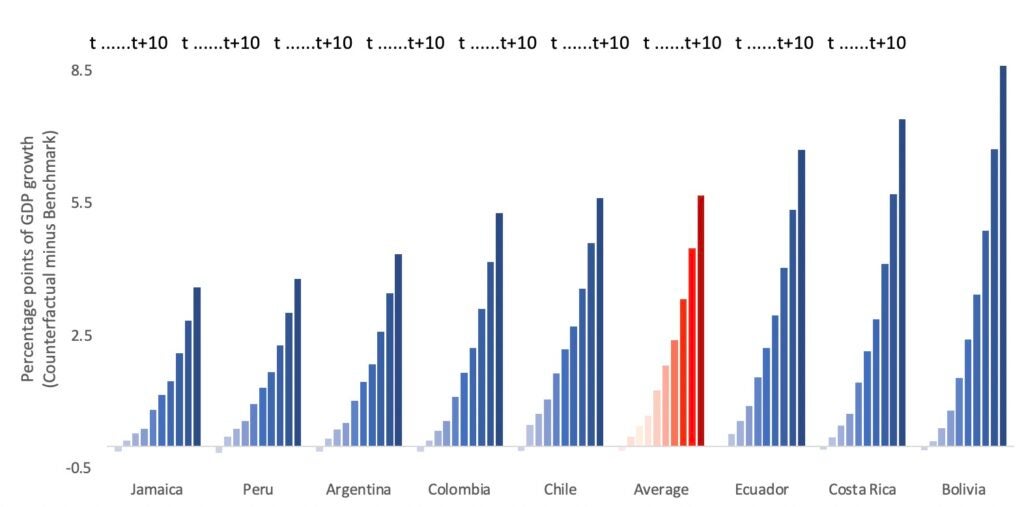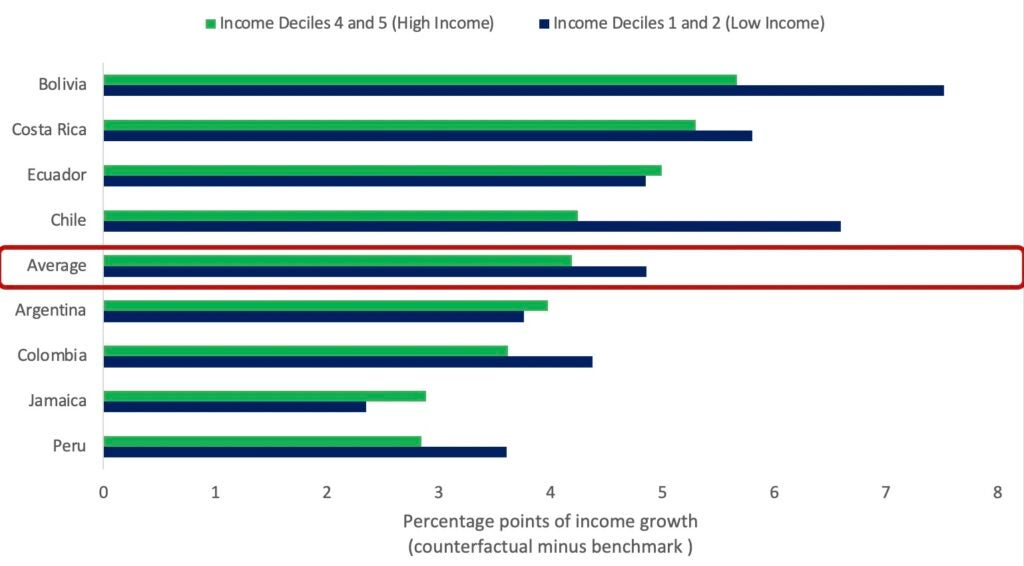
Part of our “behind the scenes” series of posts for our 2020 flagship publication From Structures to Services: The Path to Better Infrastructure in Latin America and the Caribbean
By their very nature, disruptive technological changes are difficult to predict. However, there is a consensus that the efficiency gains linked to increased digitalization of infrastructure services will provide a concrete example in the near future. In exercises presented in previous blog posts, the simulated efficiency improvements are introduced to the analysis as if they were “gifts” to the economy. However, in practice, service providers or governments—or both—must invest resources to implement the technological changes that lead to these efficiency gains.
To understand the impact that digitizing services can have on the economy, we must make assumptions about what digitizing services means and how to translate these changes to the model. Digitizing infrastructure services includes using digital technologies to expand supply, improve demand management, and improve the quality of the services provided. It includes technologies like smart meters to control and manage residential electricity consumption, smart phone apps to monitor the consumption of home appliances, remote digital sensors to measure and control water pressure, and digital screens at bus, train, and metro stations to inform passengers on the arrival of the next vehicle.
Regarding the potential benefits these changes may provide, we assume that digitalizing services produces efficiency improvements that lower costs and increase productive efficiency 15% above current standards over the next 10 years. However, in order for service providers to adopt digital technologies, investments are needed. This means new equipment (for example, smart meters) as well as digital infrastructure (for instance building 5G networks). Taking this into account, it is assumed—based on industry projections—that the capital needs of the infrastructure sectors will increase by 10% from current levels over 10 years. At the same time, with the adoption of digital technologies, demand for telecommunications services will rise above current levels. It is therefore assumed that demand for telecommunications services—which is only one of the more than 30 productive sectors of the economy according to the Social Accounting Matrix for each country—increases by 2% compared to the baseline scenario over the first three years of the simulation, then rises to 3.5% over the following three years, finally reaching 5% in the final years of the decade.
The specific magnitudes are based on evaluations of uncertain scenarios built by specialists, and therefore, they are subject to forecasting error and expert bias. But beyond the dilemmas inherent to any modeling decision, the outcomes provide an initial approach to the potential impacts that the use of digital technology and infrastructure services may have on the economy, taking into account the interconnectivity between sectors and other complexities involved in a general equilibrium framework.
The results show that after a brief period of adjustment during which economies absorb the cost of the greater investment needed to digitize services, the net positive benefits begin to appear in year 2 and continue to accumulate. By year 10, they reach the equivalent of almost 6 percentage points of GDP.
Figure 1: Impact on GDP of digitalizing infrastructure services

Note: the figure shows the annual change, in percentage points of GDP, of the counterfactual scenario (that is, the scenario where services are digitalized) minus the baseline scenario (that is, with no changes to the parameters) over the course of 10 years.
One outcome worth underscoring is that, in addition to producing economic growth, digitalization fosters inclusion. The higher growth rate is accompanied by improvements in income distribution. The models show that, for all countries, the real income of the poorest two quintiles would increase by an average of 16% more than the income of the richest two quintiles.
Figure 2. Impact of digitalization on household income

Note: Figure shows the cumulative change, in percentage points of real income, of the counterfactual (i.e., higher efficiency) minus the benchmark (i.e., business as usual) growth rates over 10 years.
Taking into account the potential impacts on production and on income distribution, the digitalization scenario is an example of what a previous blog post called “increased efficiency” in the economy. Digitalizing infrastructure services has the potential to affect the economies of the region through multiple channels, leading to enhanced productivity, better infrastructure services, and a better quality of life. Public policies can and should underpin this virtuous process by ensuring these substantial potential benefits materialize and are distributed such that everyone—and particularly the poorest—can enjoy them.


Leave a Reply